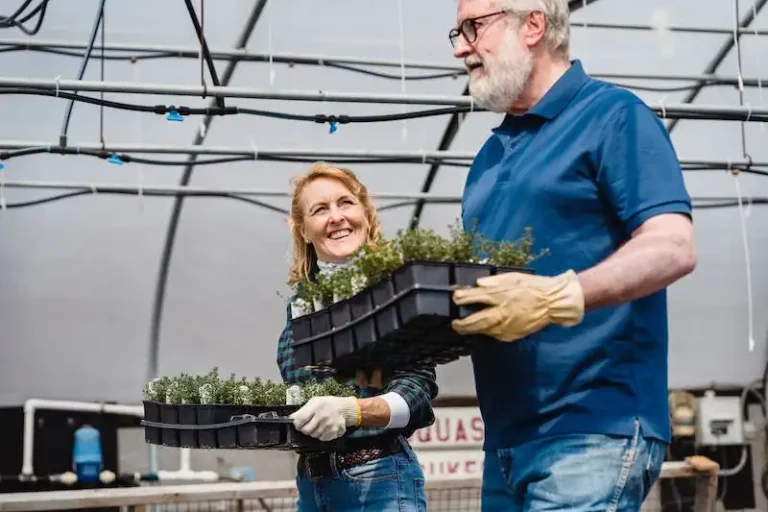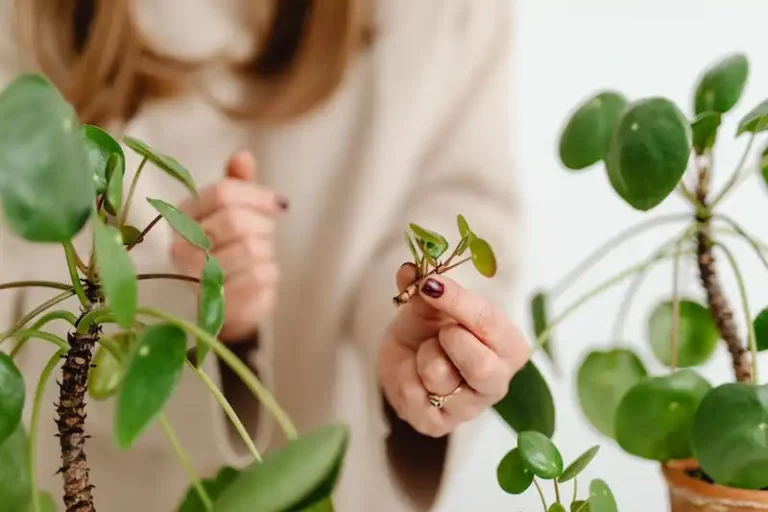The lemon verbena plant, also known as Aloysia citriodora or Lippia citriodora, is a delicate and sweet-smelling shrub that is native to South America. It is a member of the verbena family and is often grown for its aromatic leaves, which release a strong lemon fragrance when rubbed or crushed.
The lemon verbena plant is a popular herb in gardens around the world, especially in warm and sunny climates. It can be grown outdoors in the ground or in containers, and is also suitable for growing indoors as long as it has access to plenty of sunlight. This herb-based shrub is easy to grow and does not require much maintenance or special care.
Lemon verbena plants prefer well-drained soil and a warm habitat. They are semi-ripe plants, which means they can be propagated from stem cuttings or rooted from seeds. If you decide to grow your own lemon verbena plants, make sure to choose a location that receives plenty of sunlight throughout the day.
The lemon verbena plant is not prone to many diseases or problems, but it may suffer from root rot if the soil is overly damp. To prevent this, water your lemon verbena plant only when the top inch of soil feels dry. Additionally, make sure to provide proper protection during winter months or move the plant indoors.
Lemon verbena is a versatile herb that can be used in a variety of culinary and medicinal applications. Its leaves can be used to make a refreshing infusion, which can be enjoyed hot or cold. Lemon verbena is also a popular ingredient in many recipes, adding a sweet and citrusy flavor to dishes.
In conclusion, the lemon verbena plant is a sweet and lemony shrub that is easy to grow and maintain. Its delicate leaves release a refreshing aroma, making it a perfect companion in gardens or indoors. Whether you want to use it for cooking or simply enjoy its fragrance, the lemon verbena plant is a wonderful addition to any home or farm.
All about Herbs Lemon Verbena Aloysia citradora
Lemon Verbena, or Aloysia citradora, is a popular and frequently grown herb known for its sweet and lemony flavor and aroma. It is a shrub that can be planted in gardens, farms, or even potted on balconies. This herb is native to South America and is also known by its Latin name, Aloysia citriodora.
When growing Lemon Verbena, it is important to consider its location. This herb prefers well-drained soils and a sunny outdoor spot. It can tolerate a wide range of soils, but it thrives in fertile and moist soil conditions. Make sure to water the plant regularly, especially during hot summer months.
To propagate Lemon Verbena, you have several options. You can grow the plant from seeds or take cuttings from an existing plant. For sowing seeds, start in early spring and plant them in a seed tray filled with well-drained soil. Keep the soil moist until the seeds germinate.
If you prefer using cuttings, take a 4-6 inch cutting from a healthy Lemon Verbena plant. Remove the lower leaves and dip the cut end in a rooting hormone. Plant the cutting in a pot filled with well-drained soil and place it in a warm and bright location. After a few weeks, the cutting should root and grow into a new plant.
When it comes to care and maintenance, Lemon Verbena is relatively low-maintenance. It is important to prune the plant regularly to encourage healthy growth and maintain its shape. Harvesting the leaves is also an essential part of caring for this herb. You can use the leaves fresh or dry them for later use.
Lemon Verbena can be used in a variety of ways. Its leaves add a sweet and lemony flavor to salads, teas, and desserts. You can also infuse the leaves in water or use them to make fizzy drinks. In addition to its culinary uses, Lemon Verbena also has some medicinal properties and is known for its calming effects.
Like any plant, Lemon Verbena is susceptible to pests and diseases. Keep an eye out for signs of infestation, such as yellow or discolored leaves, drooping, or stunted growth. If you notice any problems, consider using organic pest control methods or consult a gardening expert for troubleshooting tips.
In conclusion, Lemon Verbena is a versatile and fragrant herb that is a valuable addition to any garden or herb collection. Whether you grow it for its culinary uses or its soothing properties, this herb is sure to delight your senses and add a touch of sweetness to all your herbal creations.
Naming of Lemon Verbena
Lemon verbena, also known as Aloysia citriodora or Lippia citriodora, is a popular herb-based plant that is native to South America. It is a shrub that releases a sweet and lemony fragrance and is commonly used in cooking, baking, and creating refreshing beverages.
The name “lemon verbena” comes from the plant’s lemon-scented leaves, which resemble those of a verbena plant. The word “verbena” itself is derived from the Latin word “verbenae,” meaning sacred plants. The “lemon” part of the name refers to the plant’s strong lemon flavor and aroma.
There are several other common names for lemon verbena, including lemon beebrush, lemon-scented verbena, and just verbena. In Chile, it is called “cedron”. These names all highlight different aspects of the plant, such as its citrus-like fragrance and its use as a medicinal herb.
Lemon verbena is a delicate plant that requires careful attention and specific growing conditions. It thrives in well-drained soils and prefers a sunny location, although it can tolerate some shade. If you are growing lemon verbena indoors, make sure to place it near a window where it can get plenty of sunlight.
Watering lemon verbena can be a bit tricky, as the plant dislikes damp conditions. It is best to water it frequently but lightly, making sure not to let the soil become waterlogged. Too much water can cause the roots to rot, leading to the demise of the plant.
Fertilizing lemon verbena is also important for its growth and health. It is recommended to fertilize the plant every two to three weeks during the growing season with a balanced fertilizer. This will provide the necessary nutrients for its vibrant foliage and robust growth.
During the dormant stage, which typically occurs in winter, lemon verbena requires less water and fertilizer. You can reduce the frequency of watering and stop fertilizing the plant during this time. However, it is essential to protect it from frost and cold temperatures, as the plant is not frost-resistant.
If you are interested in cultivating lemon verbena from seeds, it is good to know that the seeds are relatively thick and should be soaked in water for 24 hours before planting. This will help to soften the seed coat and improve germination rates.
Lemon verbena can be propagated through stem cuttings as well. Simply snip a few inches of green, non-flowering stem and remove the lower leaves. Plant the cuttings in moist, well-draining soil, and keep them in a warm and humid environment until they establish roots.
When it comes to troubleshooting lemon verbena, there are some common issues you may encounter. The plant is susceptible to powdery mildew, aphids, and spider mites. Watch for signs of these pests and take action right away to prevent them from spreading to other plants.
Harvesting lemon verbena is a delightful task as it yields fragrant and flavorful leaves. Harvest the leaves by cutting them close to the stem, making sure not to remove too many leaves at once, as this could weaken the plant. You can use fresh leaves immediately or dry them for later use in teas, infusions, or culinary purposes.
To store lemon verbena leaves, a glass jar with an airtight lid is recommended. Place the leaves in the jar and store them in a cool, dark location. This will help to maintain their flavor and aroma for an extended period.
In conclusion, lemon verbena is a popular herb-based shrub with a sweet and lemony fragrance. Its name reflects its lemon-scented leaves and their resemblance to verbena plants. Understanding the specific growing conditions, watering and fertilizing requirements, and troubleshooting tips will help you successfully cultivate and enjoy this delightful plant.
What does Lemon Verbena look like
Lemon Verbena, known by its scientific name Aloysia citradora, is a perennial shrub that has a sweet and lemony scent. It is a member of the Verbenaceae family and is native to South America, specifically Argentina and Chile.
This plant is grown from rooted cuttings or seeds. The leaves of lemon verbena are long and narrow, with a pointed tip and serrated edges. They have a vibrant green color and are packed with aromatic oils that release a strong lemon fragrance when rubbed or crushed.
When growing lemon verbena, it is important to provide it with the right conditions. It prefers well-drained soils and thrives in full sunlight. The plant can tolerate a variety of soil types, including sandy or loamy soils. It is also important to avoid overwatering, as lemon verbena prefers slightly damp conditions.
Lemon verbena plants can grow up to 6 feet in height and spread outwards as well. They have a bushy and upright growth habit, with multiple stems branching out from the base. The plant can be grown outdoors in regions with warm climates, or alternatively, it can be grown indoors in a container.
Lemon verbena is a popular herb that is used for a variety of purposes. It is commonly used in cooking and baking to add a lemon-scented flavor to dishes, desserts, and drinks. In fact, it is often referred to as “lemon beebrush” or “vervain” in some regions.
Aside from its culinary uses, lemon verbena also has some medicinal properties. It is said to have calming and soothing effects, making it a popular ingredient in herbal teas and infusions. It is also used as a natural remedy for digestive issues, anxiety, and insomnia.
When it comes to harvesting lemon verbena, it is best to do so before the plant starts flowering. The leaves can be harvested by cutting them off at the base, near a node. It is important to only take what you need and leave some leaves for the plant to continue growing.
To store lemon verbena, you can either dry the leaves or freeze them. If drying, hang the stems upside down in a cool, dark, and well-ventilated area. Once dried, store the leaves in an airtight container. If freezing, place the leaves in a sealable bag and store them in the freezer.
In terms of care, lemon verbena plants are relatively low-maintenance. They do require regular watering, especially during dry periods. It is also important to check for any signs of diseases or pests, and take appropriate measures to prevent or treat them.
Lemon verbena is a great companion plant for other herbs, such as rosemary and basil. It is also known to deter certain insects, making it a useful addition to any garden or patio.
In conclusion, lemon verbena is a beautiful and fragrant plant that adds a touch of citrus to any garden. Whether you want to enjoy its lemon-scented leaves in drinks or use it for its medicinal properties, this herb is a versatile and valued addition to the herb garden.



